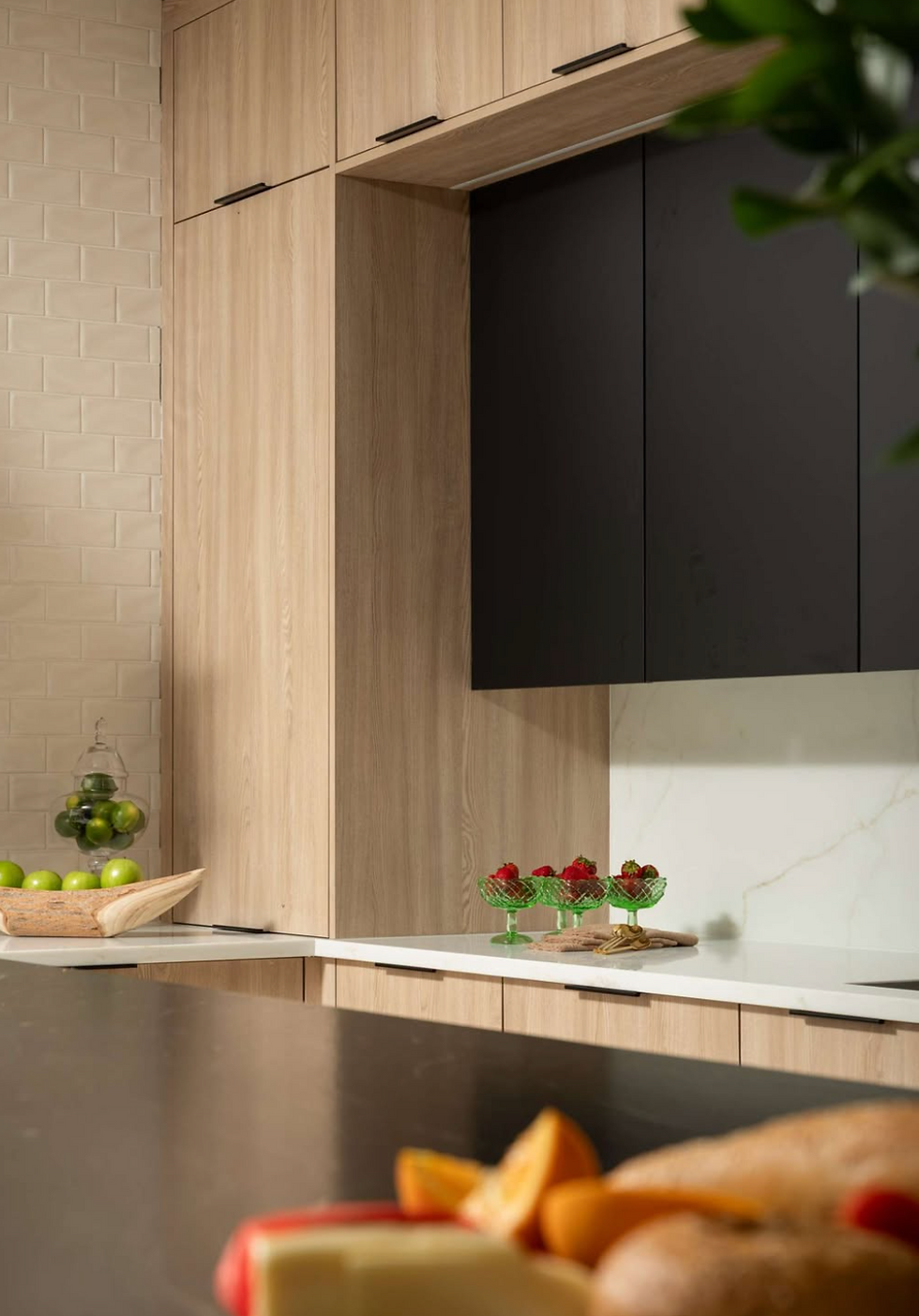How To Find The Right Stain Color
- Corbin Clay

- Jul 6, 2023
- 4 min read
Updated: Jul 11
We'll break down the process to arrive at the perfect stain color for your project, and match exactly the finish in that beautiful inspiration photo you've had pinned for months.

(Design credit: Henri Interiors )
While it would be very convenient to have a stain identifier app like so many paint companies have, unfortunately, that's just not how the process works. Even if such an app did exist, there are no standard color names for stains: one company's "mocha" could be another's "chestnut".

There are a lot of variables in how a stained finish turns out (sanding technique and grit, how long the stain was left on, type of wood, water vs oil, veneer vs solid, etc). It's much more of an entire process than simply a stain color. The only way to arrive at the correct finish for your project is to have your finisher sample, sample, sample.
Here’s How The Process Should Work
As we've discussed before, a lot goes into achieving a professional-grade cabinet finish that will last for decades. Whomever is finishing your cabinets should be able to look at several inspiration photos you have and create samples close to that finish (if they’re unable to do so, that is red flag #1).
A lot of cabinet shops will have finish samples from past projects that they could use, as well. Usually, 3-5 good examples within the color family you're wanting. Some will be way off, others very close, and we then start to hone in on the perfect tone.

Once the color is finalized, that full finish (stain, topcoat, glaze, etc) goes onto a sample of your exact door style. This step is incredibly important to both see a larger sample door with multiple pieces and shades of wood, and sometimes having both veneer and solid wood (if you're staining something other than cabinets like beams or a mantle, use as large a sample as possible).
Once approved, this then acts as the finish control for the entire project to ensure that expectations are aligned and that there are no surprises later in the process. This is standard procedure for any good builder or cabinet shop and something they will be eager to walk you through.

Stain Color vs Technique
Sometimes, what your finisher is matching isn't just a color, rather an entire technique. Toning, dying, tinting topcoat, glazing... these are all tools in the finisher's toolbox to achieve the exact finish in your photos. This is another reason we don't recommend homeowners coming up with their own stain formulas.
As I mentioned above, it's rarely as simple as wiping on some stain and we've got the right finish. A lot of technique goes into creating beautiful stained finishes. For example, though it may look it, the finish below isn't stained, it's a technique called toning:

As early in the process as possible, ask your builder/GC/cabinetmaker how they handle the sampling process. You want to make sure you've got a good partner from the beginning. As the saying goes, "you can't un-toast bread". This is especially true with finishes... often times, once a stain goes on, it's not coming off. Let's be 100% certain we know exactly what the end result is going to look like before finishing the entire project.
Mixing Different Wood Species
With the popularity of open floor plans, having multiple stained wood features is very common. Beams, floors, cabinets, floating shelves, and mantles can all be in the same line of sight and need to work well together.

We recommend starting with the perfect color on the largest detail (often your floors), and then start to match the other pieces to that. A piece of your flooring can be used to color match a custom stain at places like Sherwin Williams or Diamond Vogel. This is the best approach to trying to match everything as closely as possible. If you're dealing with a lot of different wood types (oak for the cabinets, fir for the doors, alder for the beams, and pine for mantle), it's generally a good idea to try and create complimentary colors rather than an exact match. While a custom stain match can get close, it often doesn't take into account the undertones of the different wood types. One stain on oak will look completely different when on maple.
These are conversations to have early in the process to make sure all expectations are aligned. If you really want the beams in the adjacent living room and kitchen cabinetry stain to match, offer to pay for samples early-on to ensure the pine beams can be stained to match the oak. If not, lets work oak beams into the budget. The sooner this discussion is had, the better, so there are surprises months into the project.
We're Here To Help
After decades in the industry, we completely understand just how overwhelming this all can be. As a recent member said, "the biggest issue I had during my build was not knowing what I did not know, until it was too late". Additionally, while there are a lot of very talented cabinetmakers... there aren't as many talented finishers.
Having a partner early in the process to help identify red flags, walk you through what the process should look like, and help vet the other professionals on your project is exactly why we created this group.

We understand that you're not just building a house, you're creating a home, and every detail has to be perfect. Whether it's our blog or free expert advice in our Facebook group, we're here to help you every step of the way!


